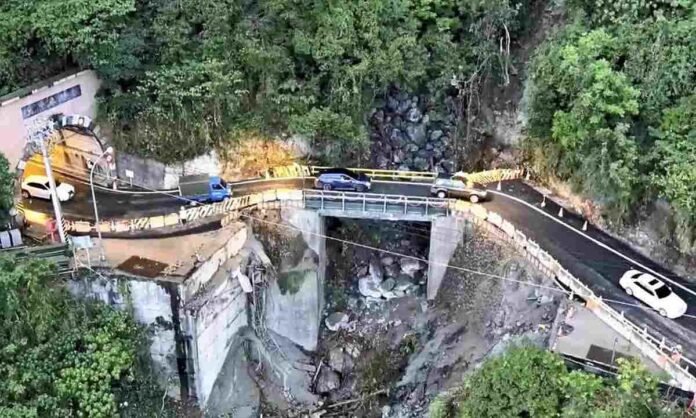A Japanese colonial-era fortified bridge is used in place of the collapsed Xiaqingshui Bridge in the foreground.
1:40 PM JST, April 9, 2024
TAIPEI – A bridge built nearly a century ago during the Japanese colonial period is serving a crucial role in Taiwan’s earthquake recovery, providing a lifeline for transportation in place of the large bridge that collapsed.
The colonial-era bridge, built in 1930, is being used in place of the Xiaqingshui Bridge that fell after the massive earthquake off the coast of Hualien city in eastern Taiwan.
Local residents have expressed surprise that the old bridge had the stability to withstand the April 3 earthquake, which reached the highest 6 on Japan’s seismic intensity scale.
According to The Liberty Times and other sources, the 25-meter-long Xiaqingshui Bridge opened in 1972 and was located along a coastal road in Hualien that provides the shortest route to Taipei in the north.
Officials desperately needed the route to transport relief supplies to earthquake-hit areas and deemed the nearby Japanese-era bridge usable if it were reinforced with steel trusses.
The 10-meter-long bridge was largely abandoned after the opening of the Xiaqingshui Bridge, but withstood the earthquake and was opened to traffic on Saturday. Currently it is open three times a day for small vehicles under 5 tons.
With the surprising reuse of the old bridge, social media posts thanked Japan for leaving behind “a solid infrastructure.” Taiwanese Minister of Transport and Communications Wang Kwo-tsai wrote: “A great predecessor has come through.”
Throughout Taiwan, a number of buildings from the colonial period survive as restaurants, tourist attractions and other functions.
For example, the Qingxiu Yuan Temple in Hualien was built in 1917 by immigrants from Tokushima Prefecture.
The temple suffered damage during the earthquake, causing the pillars of the main hall to shift, chunks of mud walls to loosen, and stone statues to break. The main hall remains closed to visitors and there is no timeline yet for repairs.



